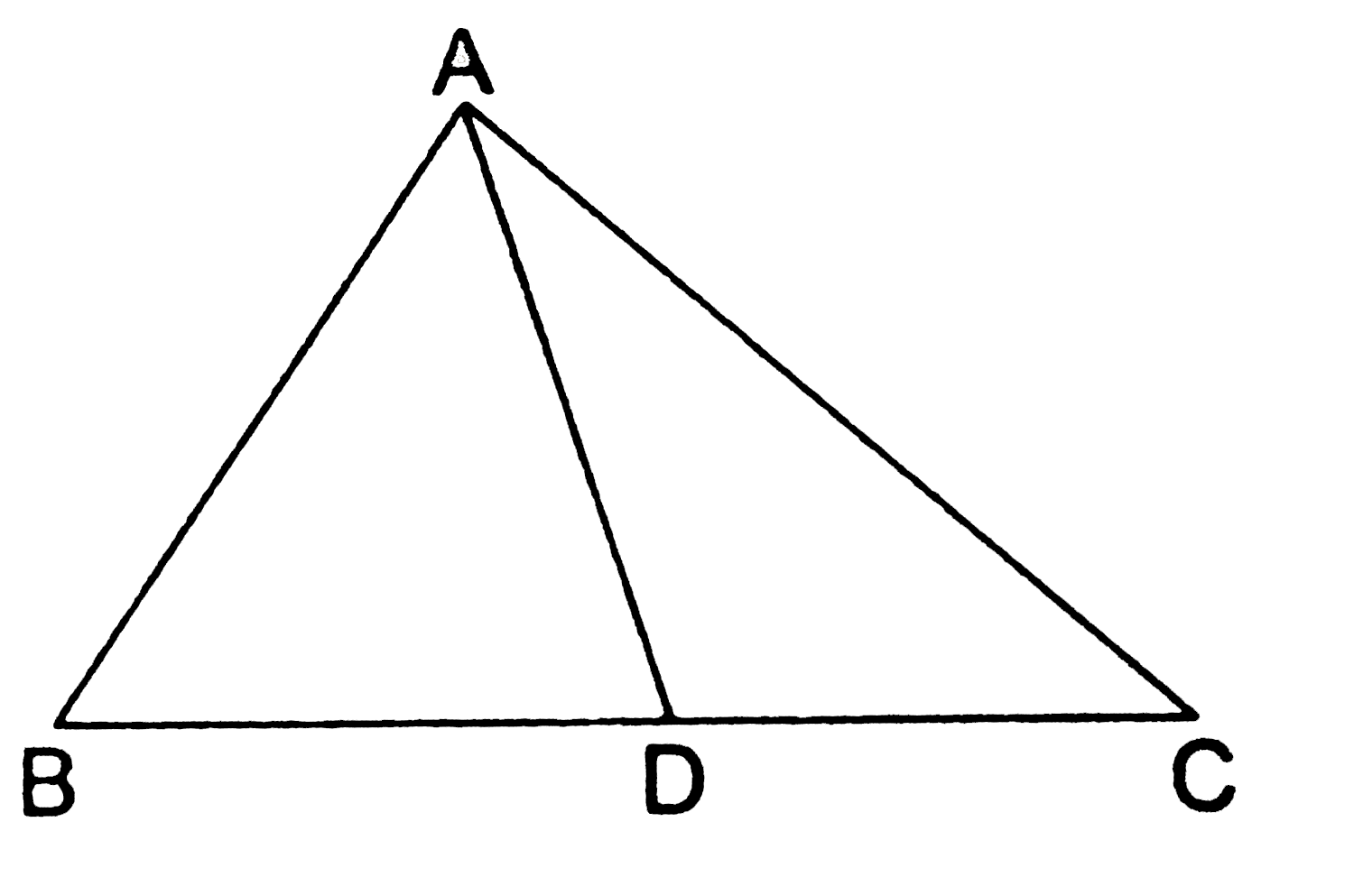In a ΔABC, D is the mid-point of BC and E is the foot of the perpendicular drawn from A on BC. If ED=X. AD=p, AE=h, AB=c, AC=b, and BC=a, then 2b2+2c2−a2=…………...
p2
2p2
4p2
None of these
To solve the problem, we will use the properties of triangles and the Pythagorean theorem. Let's break down the solution step by step.
Step 1: Understand the Triangle Configuration
We have triangle ΔABC with:
- D as the midpoint of BC
- E as the foot of the perpendicular from A to BC
Step 2: Define the Given Values
We are given:
- ED=X
- AD=P
- AE=H
- AB=C
- AC=B
- BC=A
Step 3: Express BC in Terms of BD and DC
Since D is the midpoint of BC:
BC=BD+DC=Y+Y=2Y
Thus, we can say:
A = 2Y \quad \text{(where Y = BD = DC )}
Step 4: Apply the Pythagorean Theorem
For triangle AEC:
AC2=AE2+CE2
This gives us:
B2=H2+(Y−X)2
Expanding this:
B2=H2+(Y2−2YX+X2)
For triangle ABE:
AB2=AE2+BE2
This gives us:
C2=H2+(Y+X)2
Expanding this:
C2=H2+(Y2+2YX+X2)
Step 5: Combine the Equations
Now we have:
1. B2=H2+Y2−2YX+X2
2. C2=H2+Y2+2YX+X2
Step 6: Multiply and Combine
Now we need to find 2B2+2C2−A2:
2B2=2(H2+Y2−2YX+X2)
2C2=2(H2+Y2+2YX+X2)
Adding these:
2B2+2C2=2H2+2Y2−4YX+2X2+2H2+2Y2+4YX+2X2
=4H2+4Y2+4X2
Step 7: Subtract A2
Now we subtract A2:
A2=(2Y)2=4Y2
Thus:
2B2+2C2−A2=(4H2+4Y2+4X2)−4Y2
This simplifies to:
=4H2+4X2
Step 8: Final Expression
We can express this as:
=4(H2+X2)
Step 9: Relate to P
From the right triangle ADE:
AD2=AE2+ED2⟹P2=H2+X2
Thus:
2B2+2C2−A2=4P2
Final Answer
2B2+2C2−A2=4P2
We have triangle ΔABC with:
- D as the midpoint of BC
- E as the foot of the perpendicular from A to BC
We are given:
- ED=X
- AD=P
- AE=H
- AB=C
- AC=B
- BC=A
Since D is the midpoint of BC:
BC=BD+DC=Y+Y=2Y
Thus, we can say:
A = 2Y \quad \text{(where Y = BD = DC )}
For triangle AEC:
AC2=AE2+CE2
This gives us:
B2=H2+(Y−X)2
Expanding this:
B2=H2+(Y2−2YX+X2)
AB2=AE2+BE2
This gives us:
C2=H2+(Y+X)2
Expanding this:
C2=H2+(Y2+2YX+X2)
Now we have:
1. B2=H2+Y2−2YX+X2
2. C2=H2+Y2+2YX+X2
Now we need to find 2B2+2C2−A2:
2B2=2(H2+Y2−2YX+X2)
2C2=2(H2+Y2+2YX+X2)
2B2+2C2=2H2+2Y2−4YX+2X2+2H2+2Y2+4YX+2X2
=4H2+4Y2+4X2
Now we subtract A2:
A2=(2Y)2=4Y2
Thus:
2B2+2C2−A2=(4H2+4Y2+4X2)−4Y2
This simplifies to:
=4H2+4X2
We can express this as:
=4(H2+X2)
From the right triangle ADE:
AD2=AE2+ED2⟹P2=H2+X2
Thus:
2B2+2C2−A2=4P2
2B2+2C2−A2=4P2
Similar Questions
Knowledge Check
In the ΔABC,AB=a,AC=candBC=b, then
Aa+b+c=0Ba+b-c=0Ca-b+c=0D−a+b+c=0If A:B = 2:3 and B:C = 7:8 then A:C is
A9:11B7:12C16:21Dnone of theseArea of ΔABC=30cm2. D and E are the mid - points of BC and AB respectively. Find A(ΔBDE) :
A10B7.5C15Dnone of these
In ΔABC,D is the midpoint of BC and AE⊥BC. If AC>AB, show that AB2=AD2−BC⋅DE+14BC2
View SolutionThe perpendicular from A on side BC of a ABC intersects BC at D such that DB = 3 CD. Prove that 2AB2=2AC2+BC2.
View SolutionIn a triangle ABC, AC>AB , D is the mid-point of BC and AE⊥BC . Prove that: (i) AB2=AD2−BCxDE+14BC2
View SolutionIn a ΔABC,AB=AC,D is a point on BC such that ∠BAD=50∘ and a point E on side AC such that AE = AD find ∠CDE.
View SolutionThe perpendicular from A on side BC of a ΔABC meets BC at D such that DB = 3CD .Prove that 2AB2=2AC2+BC2.
View Solution
